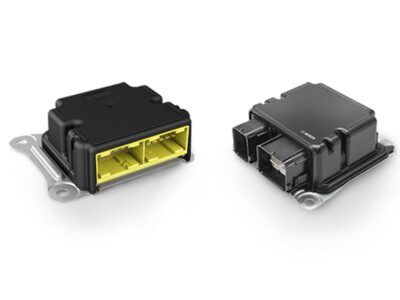
How to Fix Fiat Tipo Braking Issues: A Step-by-Step Guide

The Fiat Tipo is a popular vehicle known for its style and performance, but like any car, it can experience braking issues that compromise safety and reliability. If you're experiencing problems with your Fiat Tipo's brakes, this guide is designed to help. We'll walk you through a step-by-step process to diagnose and fix common braking issues, ensuring your vehicle is back to its optimal stopping power. From inspecting brake pads to bleeding the brake system, we'll cover the essential repairs to get your Fiat Tipo braking smoothly and safely again. Regular maintenance is key.
Diagnosing and Troubleshooting Fiat Tipo Braking Issues
To fix braking issues with your Fiat Tipo, it's essential to understand the root cause of the problem. The braking system is a complex network of components that work together to enable safe and effective stopping. Issues can arise from various sources, including worn-out brake pads, faulty brake calipers, or problems with the brake fluid system. By following a step-by-step guide, you can identify and address the issue, ensuring your vehicle is safe to drive.
Checking Brake Pads and Rotors
The first step in diagnosing braking issues is to inspect the brake pads and rotors. Worn-out brake pads can cause the brakes to feel spongy or unresponsive. Check the thickness of the brake pads and look for any signs of excessive wear. If the pads are worn down to the minimum thickness, they need to be replaced. Similarly, inspect the brake rotors for any signs of excessive wear or warping. If the rotors are damaged, they may need to be resurfaced or replaced.
| Brake Pad Condition | Action Required |
|---|---|
| Worn down to minimum thickness | Replace brake pads |
| Uneven wear | Inspect brake calipers and adjust or replace as needed |
Bleeding the Brake System
Air in the brake fluid system can cause the brakes to feel spongy or unresponsive. To fix this issue, you need to bleed the brake system. This involves removing the air from the brake lines and replacing the brake fluid. Start by checking the brake fluid level and topping it off if necessary. Then, use a brake bleeding kit to remove the air from the system. Be sure to follow the manufacturer's instructions for the correct procedure.
| Brake Fluid Condition | Action Required |
|---|---|
| Low brake fluid level | Top off brake fluid |
| Contaminated brake fluid | Replace brake fluid |
Inspecting Brake Calipers and Hardware
Faulty brake calipers or brake hardware can also cause braking issues. Inspect the brake calipers for any signs of corrosion or damage. Check the brake caliper pins and slides for any signs of wear or corrosion. If the brake calipers are damaged, they may need to be replaced. Additionally, inspect the brake hardware, including the brake pad retaining clips and brake pad springs, for any signs of wear or damage.
| Brake Caliper Condition | Action Required |
|---|---|
| Corrosion or damage | Replace brake caliper |
| Worn-out brake caliper pins or slides | Replace brake caliper pins or slides |
What is always the first step to diagnosing the braking system?

 Troubleshooting Fiat Tipo Suspension Failures
Troubleshooting Fiat Tipo Suspension FailuresThe first step to diagnosing the braking system is to gather information about the problem. This involves understanding the symptoms and the conditions under which they occur. The driver or owner of the vehicle is typically the best source of this information. By asking the right questions, a technician can gain a better understanding of the issue and begin to identify potential causes.
Understanding the Symptoms
Understanding the symptoms is crucial in diagnosing braking system problems. The symptoms can range from unusual noises, vibrations, or pedal feel. To effectively diagnose the issue, the technician must understand when the symptoms occur, such as when applying the brakes, when driving at high speeds, or when the vehicle is loaded.
- Identify the type of symptom, such as noise, vibration, or pedal feel
- Determine when the symptom occurs, such as when applying the brakes or when driving at high speeds
- Note any other relevant details, such as the speed or conditions under which the symptom occurs
Gathering Information from the Driver
Gathering information from the driver is an essential part of diagnosing braking system problems. The driver may have valuable insights into the issue, such as when it first occurred or under what conditions it happens. By asking the right questions, a technician can gain a better understanding of the problem and begin to identify potential causes.
- Ask the driver to describe the symptom and when it occurs
- Inquire about any recent repairs or maintenance performed on the vehicle
- Ask if the driver has noticed any other issues with the vehicle, such as unusual noises or vibrations
Reviewing the Vehicle's Maintenance History
Reviewing the vehicle's maintenance history is also an important step in diagnosing braking system problems. The maintenance history can provide valuable information about the condition of the braking system and help identify potential causes of the problem.
- Review the vehicle's maintenance records to determine when the brakes were last serviced
- Check for any recalls or technical service bulletins related to the braking system
- Review any previous repair records to identify potential underlying causes of the problem
What does check brake control mean?
The phrase check brake control is a warning or notification message typically displayed on a vehicle's dashboard or instrument cluster, indicating a potential issue with the vehicle's braking system or its associated control systems. This message can be triggered by a variety of factors, including problems with the vehicle's brake hardware, issues with the electronic control systems that manage braking, or faults in the sensors that monitor brake operation.
You may be interested in reading Troubleshooting Fiat Tipo Suspension Failures
Troubleshooting Fiat Tipo Suspension Failures Resolving Electrical Problems in the Fiat Tipo
Resolving Electrical Problems in the Fiat TipoBrake Control System Components
The brake control system encompasses a range of components that work together to facilitate safe and effective braking. Key elements include the brake calipers, brake pads, rotors, and the master cylinder, as well as electronic systems like the Anti-lock Braking System (ABS) and Electronic Stability Control (ESC). When the check brake control message appears, it may be related to a malfunction in any of these components.
- The brake calipers and associated hardware may be faulty or worn out, necessitating inspection or replacement.
- Electronic control units (ECUs) or software issues can cause the brake control system to malfunction, triggering the warning message.
- Sensors that monitor brake operation, such as wheel speed sensors, may be dirty, damaged, or failing, leading to incorrect data being sent to the vehicle's control systems.
Potential Causes of the Warning
The check brake control message can be triggered by a range of potential causes. These may include electrical or electronic faults within the braking system, mechanical issues with the brakes themselves, or problems with the vehicle's control systems that affect braking performance. Understanding the specific cause is crucial to addressing the issue effectively.
- Faulty wiring or corroded connections within the brake control circuit can lead to intermittent or persistent problems.
- Software glitches or the need for an update in the vehicle's electronic control systems can cause the brake control warning to appear.
- Wear and tear on brake components, such as worn brake pads or warped rotors, can also trigger the message if the vehicle's systems detect a deviation from normal operation.
Actions to Take When the Message Appears
When the check brake control message is displayed, it is essential to take appropriate action to ensure the vehicle remains safe to operate. This typically involves having the vehicle's braking system and associated control systems inspected by a qualified mechanic or automotive technician. They can diagnose the root cause of the issue and perform any necessary repairs.
- Check the vehicle's brake fluid level and condition, as low levels or contaminated fluid can affect brake performance.
- Inspect the brake hardware for signs of wear or damage, such as thin brake pads or scored rotors.
- Use specialized diagnostic equipment to interrogate the vehicle's electronic control systems and identify any fault codes or issues that may be contributing to the warning message.
Frequently Asked Questions
What are the common causes of braking issues in Fiat Tipo?
The common causes of braking issues in Fiat Tipo include worn-out brake pads, faulty brake sensors, and worn-out brake rotors. Other possible causes are low brake fluid levels, air in the brake system, and malfunctioning ABS systems. Regular maintenance checks can help identify these issues early on, and addressing them promptly can prevent more severe problems from developing.
How do I inspect the brake pads and rotors of my Fiat Tipo?
To inspect the brake pads and rotors, start by removing the wheels and visually checking the brake pads for wear. Measure the thickness of the brake pads and compare it to the manufacturer's recommended minimum. Inspect the brake rotors for excessive wear, scoring, or warping. Check for any signs of excessive heat damage or cracking. Replace the brake pads and rotors if necessary, following the manufacturer's guidelines.
What is the correct procedure for bleeding the brake system in Fiat Tipo?
To bleed the brake system, start by gathering the necessary tools and equipment, including a brake bleeding kit. Locate the brake bleeder valves and attach the bleeding kit. Pump the brake pedal to pressurize the system, then open the bleeder valve to release the air and brake fluid. Repeat this process until the fluid flowing out is clear and free of air bubbles. Check the brake fluid level and top it off as needed.
You may be interested in reading Troubleshooting Fiat Tipo Suspension Failures
Troubleshooting Fiat Tipo Suspension Failures Resolving Electrical Problems in the Fiat Tipo
Resolving Electrical Problems in the Fiat Tipo Fixing Door Lock Failures in Your Fiat Tipo
Fixing Door Lock Failures in Your Fiat TipoCan I fix Fiat Tipo braking issues on my own or should I consult a professional?
While some basic brake maintenance tasks can be performed by a DIY enthusiast, more complex issues may require the expertise of a professional mechanic. If you're unsure about the cause of the braking issue or feel uncomfortable performing the necessary repairs, it's recommended to consult a qualified mechanic or a Fiat dealership for assistance to ensure the repairs are done safely and correctly.

If you want to know other articles similar to How to Fix Fiat Tipo Braking Issues: A Step-by-Step Guide you can visit the category Fiat Tipo.
Deja una respuesta






More content of your interest